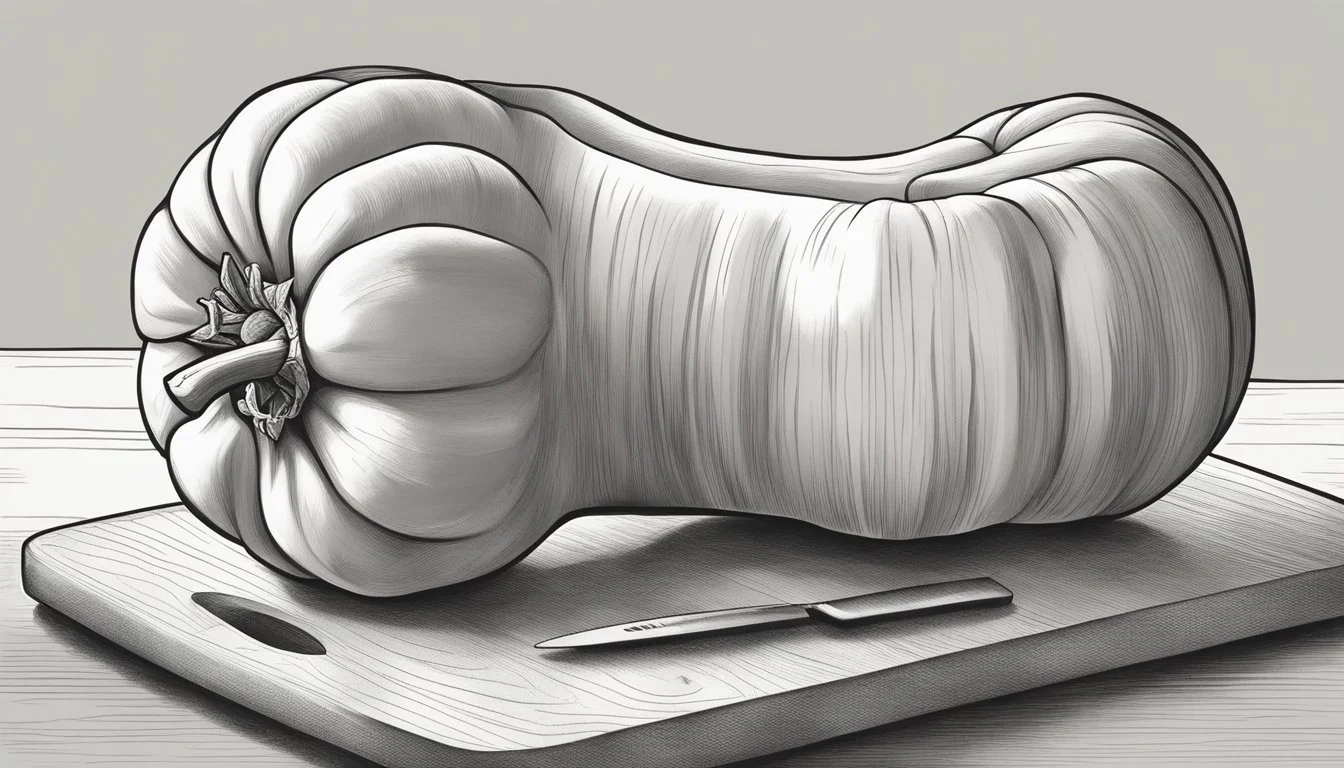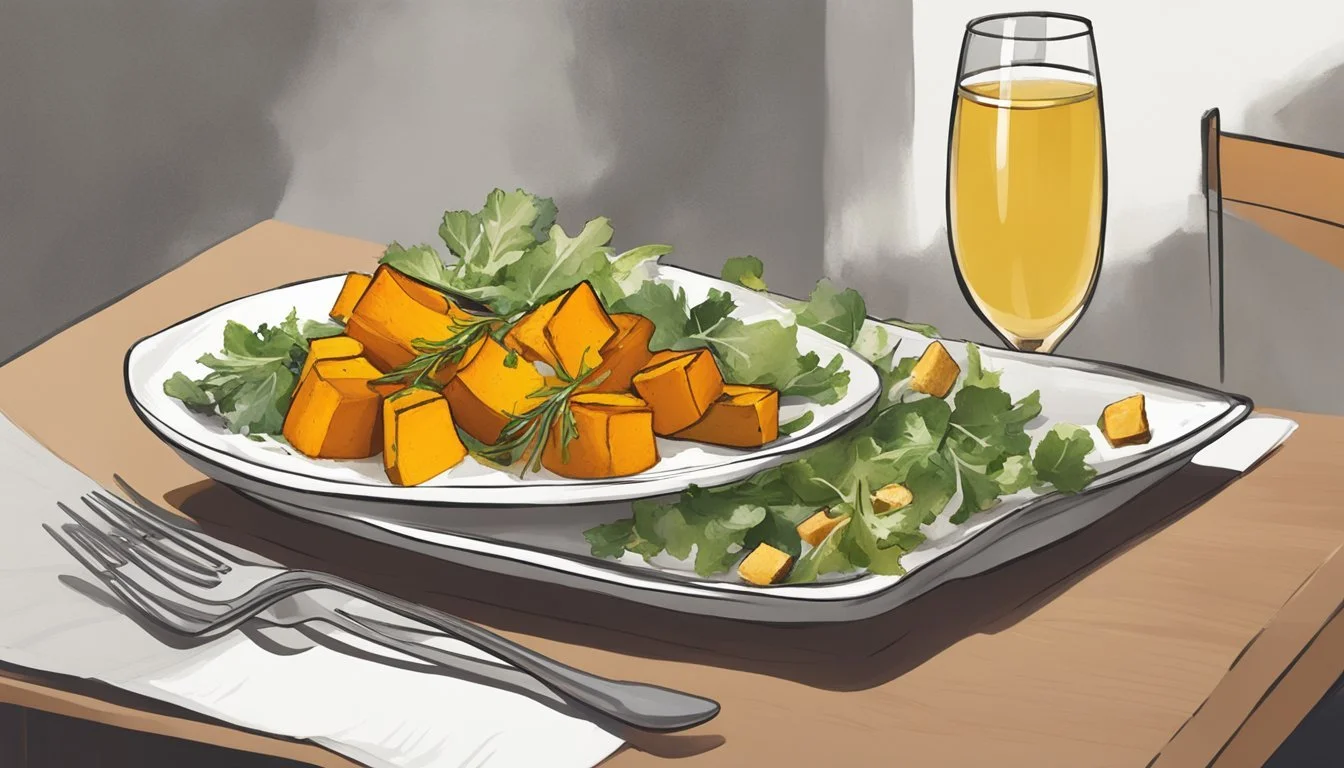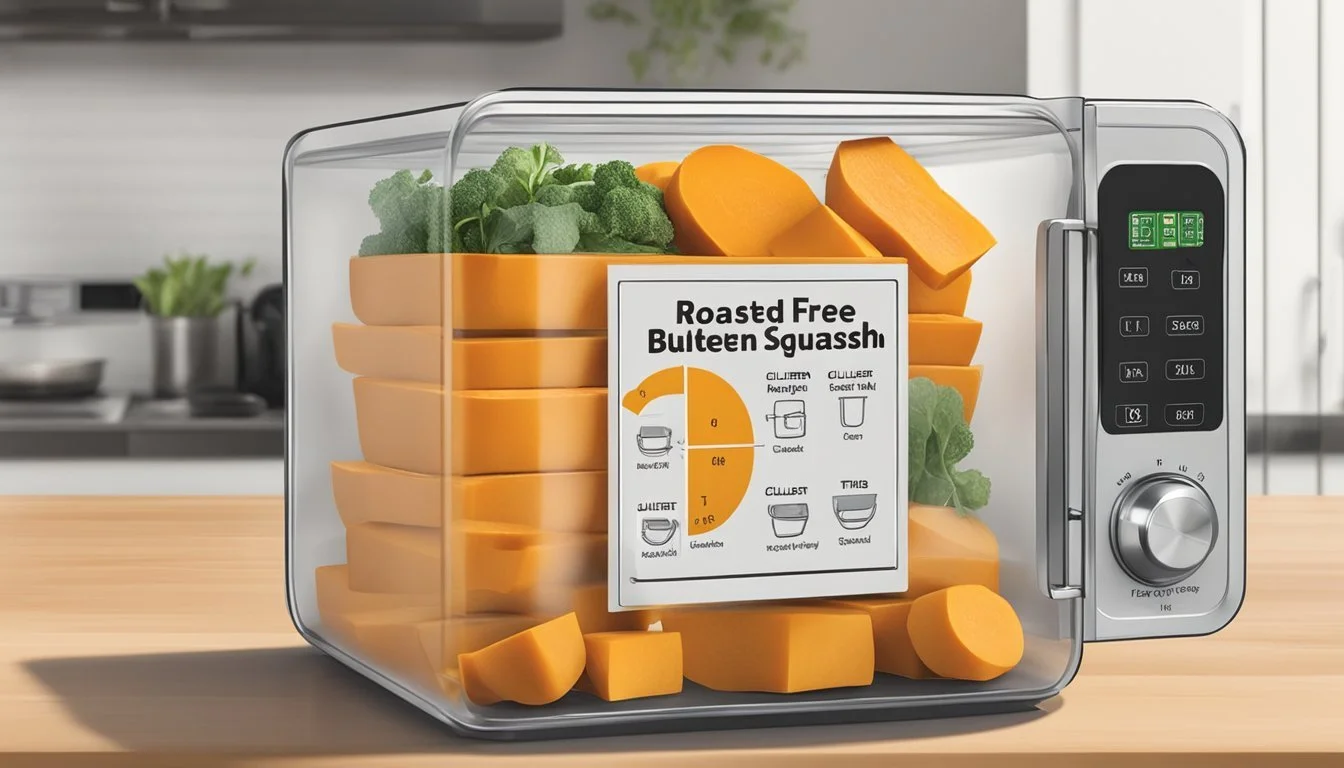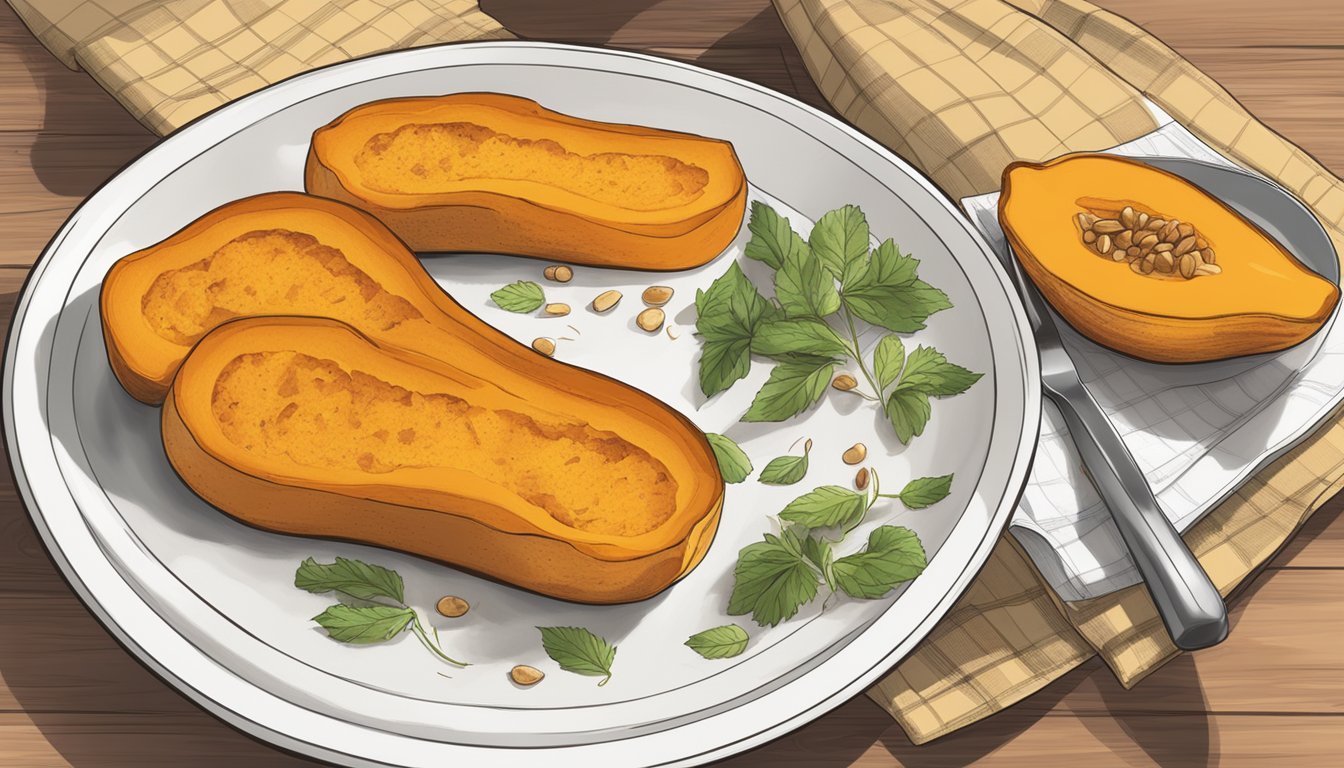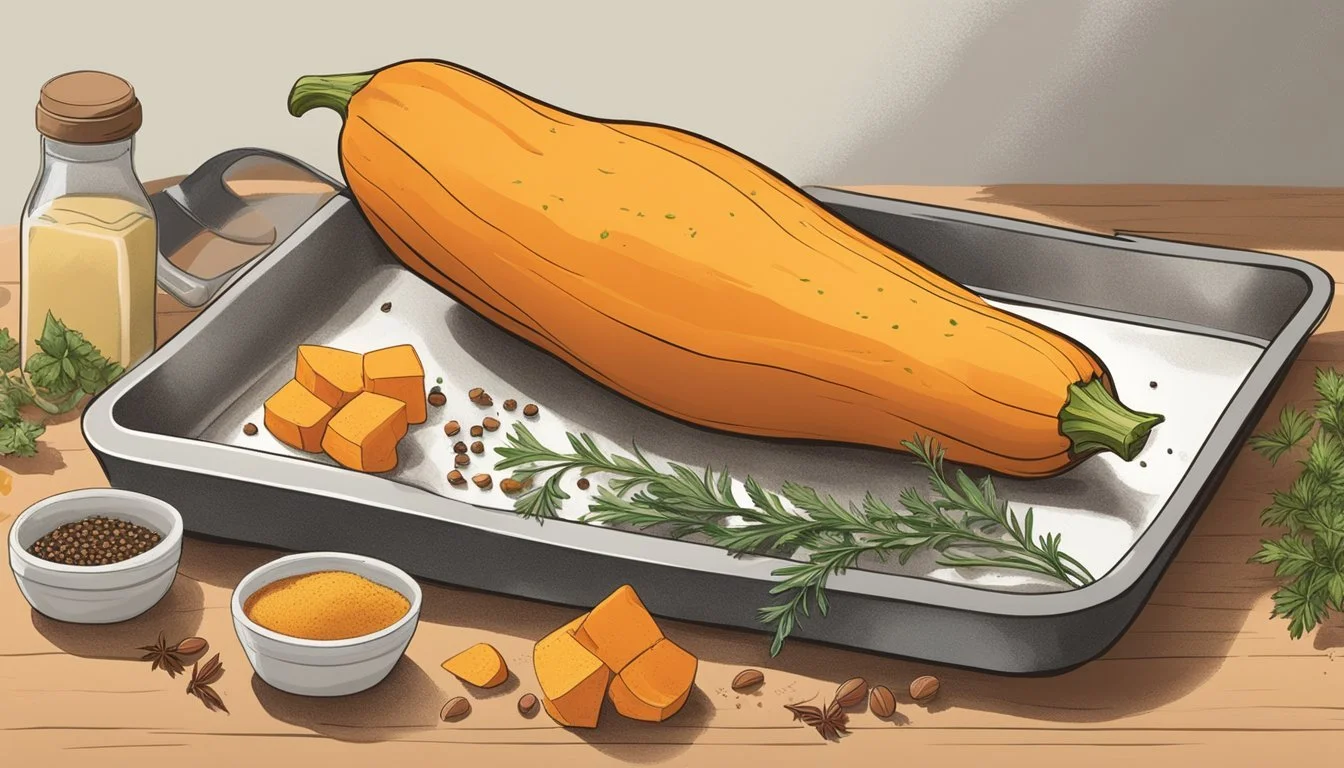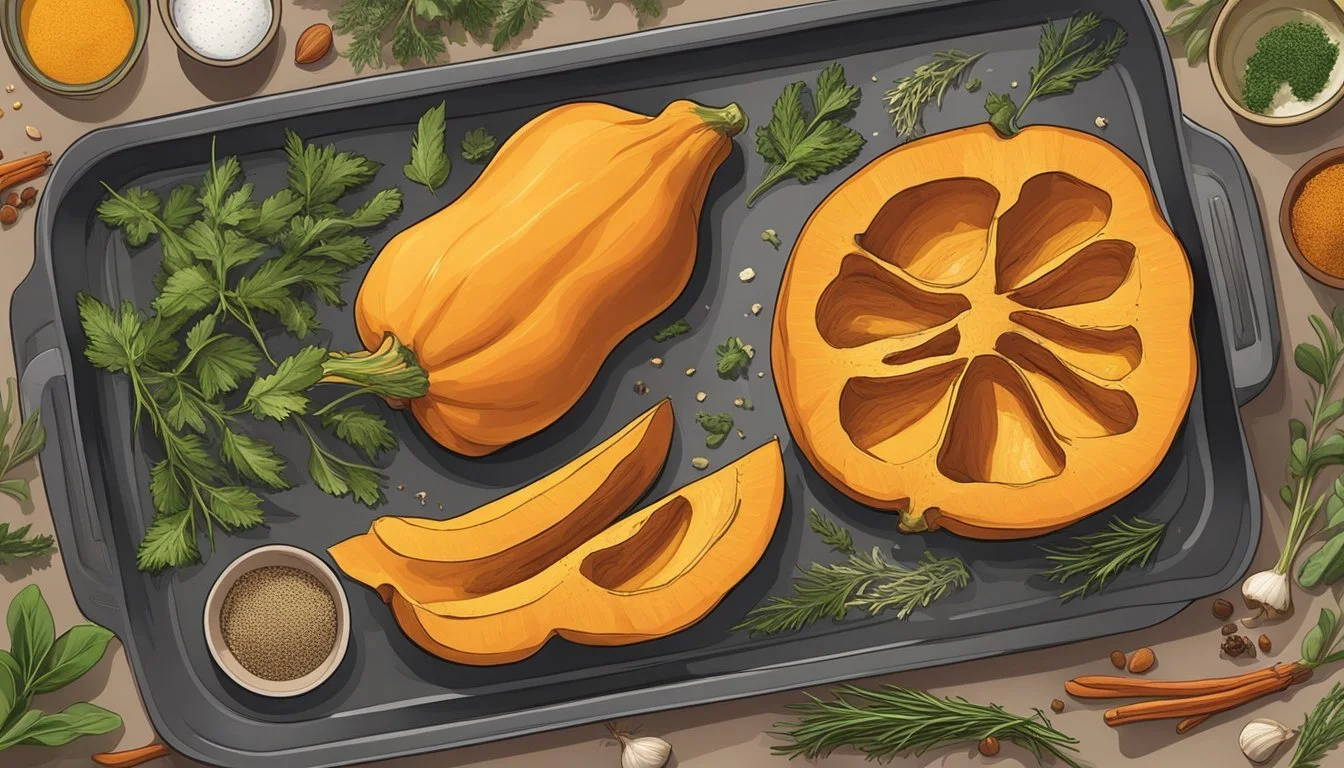How to Reheat Gluten-Free Roasted Butternut Squash
Effortless Methods Explained
Reheating gluten-free roasted butternut squash can be a straightforward task, yielding a delicious, wholesome dish that's perfect for any meal. For those prioritizing a gluten-free lifestyle, ensuring that leftover vegetables retain their flavor and texture is essential. Using the right techniques can help you achieve that warm, caramelized, and slightly crispy finish every time.
A key method involves the oven. Place your pre-roasted butternut squash on a baking sheet lined with parchment paper or aluminum foil. This keeps it from sticking and makes cleanup easier. Preheat the oven to 350°F (175°C), arrange the squash in a single layer, and heat for about 15-20 minutes, or until it's warmed through. This method ensures even heating and preserves the rich, roasted flavor without compromising its gluten-free nature.
Stovetop reheating is another efficient method. Heat a skillet over medium heat and add a small amount of oil. Place the squash pieces in the skillet and cover with a lid to trap steam. Gently stir occasionally for 5-8 minutes until the squash is heated thoroughly. This method is especially useful if you prefer a slightly crispy texture on the edges.
Selecting Quality Butternut Squash
Choosing the right butternut squash is crucial for the best-tasting roasted dish. The following criteria will help you pick a ripe and ready squash and prepare it for roasting with ease.
Assessing Ripeness and Texture
When selecting butternut squash, look for a uniform beige color. The skin should be matte rather than shiny.
A ripe butternut squash should feel heavy for its size and have a firm texture. Press your thumb lightly against the skin; there should be no soft spots, which indicate potential spoilage.
The stem should also be intact, dry, and firm to ensure the quality of the squash.
Preparation Before Roasting
Before roasting, wash the butternut squash thoroughly to remove any dirt.
Use a sharp vegetable peeler to remove the skin. The peeled butternut squash should have a bright orange color.
Cut the squash lengthwise to expose the seeds. Remove the seeds and any stringy pulp with a spoon.
Finally, cut the squash into 1-inch cubes or the desired size, ensuring even pieces for uniform roasting.
With quality ingredients and proper preparation, your roasted butternut squash will be a delightful gluten-free dish.
Basics of Roasting Butternut Squash
Roasting butternut squash involves a straightforward process that can produce a delicious side dish or a key ingredient for other recipes. Focus on selecting fresh ingredients and following clear steps for perfect results.
Required Ingredients
To roast butternut squash, you'll need:
1 medium butternut squash
2 to 3 tablespoons olive oil
Salt and pepper to taste
Optional seasonings: a sprinkle of cinnamon, nutmeg, or thyme for added flavor
Begin by peeling the squash using a potato peeler. Cut off the stem, split the squash lengthwise, and scoop out the seeds. Then, slice or dice the squash into uniform pieces to ensure even cooking.
Roasting Instructions
Preheat Oven: Set your oven to 400˚F (200°C) to achieve the perfect roast.
Prep the Baking Sheet: Line a rimmed baking sheet with parchment paper or use a non-stick sheet to prevent sticking and make cleanup easier.
Arrange the Squash: Toss the squash pieces in olive oil until well-coated, then spread them out in a single layer on the baking sheet. This helps the pieces roast evenly and develop a nice golden brown color.
Season: Sprinkle the squash with salt, pepper, and any additional seasonings like cinnamon or thyme for an added touch of flavor.
Roast: Place the baking sheet in the preheated oven and bake for about 20-25 minutes. At the 15-minute mark, use a spatula to toss the squash for even cooking.
Ensure the squash is tender and slightly browned before removing it from the oven. Enjoy as a delightful side dish or incorporate it into other recipes.
Enhancing Flavor and Nutrition
Reheating gluten-free roasted butternut squash offers a chance to amplify both taste and nutritional value. By using appropriate seasoning and incorporating specific spices, the dish can be transformed into a flavorful and healthful experience.
Proper Seasoning Techniques
Seasoning roasted butternut squash correctly enhances its natural sweetness and adds depth to its flavor profile. Salt and pepper are the basics, balancing the squash’s natural sugars. Add a drizzle of olive oil for richness and to help the seasonings adhere better.
Garlic and herbs such as rosemary or thyme can be introduced during reheating for an aromatic enhancement. For a slightly sweet twist, consider adding a pinch of cinnamon.
Maintaining a good balance of salt and pepper is crucial, as oversalting can overshadow the squash's delicate flavor. Using nutrient-dense oil like olive oil not only boosts flavor but also increases the absorption of fat-soluble vitamins.
Health Benefits of Adding Spices
Adding spices like chili powder, cinnamon, and garlic does more than just enhance taste—they also improve the health benefits of your dish. Garlic is known for its antioxidant properties and can help reduce inflammation. On the other hand, cinnamon aids in regulating blood sugar levels, making the dish more diabetic-friendly.
Incorporating a moderate amount of chili powder brings a gentle heat, which can help boost metabolism. Each of these spices can complement the squash’s texture and flavor, creating a well-rounded, nutritious option.
Butternut squash is already rich in fiber, vitamins A and C, and low in calories while providing a modest amount of protein. Adding these spices can enhance the nutritional profile without introducing significant calories, making for a well-rounded, nourishing meal.
Reheating Techniques
To reheat gluten-free roasted butternut squash, several methods can achieve a warm, tender texture. The oven, microwave, and stovetop each offer unique advantages, allowing you to choose based on your timing and equipment.
Oven Method
Preheat the Oven: Set the oven to 350°F (175°C).
Prepare the Squash: Cut the leftover butternut squash into uniform pieces to ensure even heating. Arrange them on a baking sheet lined with parchment paper or aluminum foil.
Reheat: Place the baking sheet in the preheated oven. Bake for 15-20 minutes or until the squash is warmed through. Stirring halfway ensures even heating.
Serve: Remove from the oven and serve immediately to enjoy the refreshed texture of the squash.
Microwave Method
Container: Use a microwave-safe container for reheating.
Add Moisture: To prevent the squash from drying out, cover it with a microwave-safe lid or a damp paper towel.
Microwave: Heat the butternut squash in the microwave on medium power for 2-3 minutes. Stir halfway through to promote even heating.
Check: Ensure the squash is heated thoroughly. If not, continue reheating in 30-second bursts.
Serve: Serve immediately for best results.
Stovetop Method
Heat the Pan: Add 1-2 tablespoons of olive oil or butter to a skillet. Heat over medium heat until hot.
Add the Squash: Place the roasted butternut squash in the pan. Stir occasionally to prevent sticking and ensure even heating.
Season: Enhance the flavor with herbs and spices such as cinnamon, nutmeg, or rosemary if desired.
Cook: Continue to sauté the squash until it is thoroughly heated, usually around 5-7 minutes.
Serve: Transfer the heated squash to a serving dish and enjoy.
Serving Suggestions and Pairings
Roasted butternut squash can elevate a variety of meals with its rich flavor and smooth texture. Below are some thoughtful ways to incorporate it into main dishes or complement it with other sides and salads.
Incorporating into Main Dishes
Roasted butternut squash works well in grain bowls. Combine it with quinoa, kale, and a protein like grilled chicken or tofu for a nutritious meal.
Pasta dishes can benefit from the addition of butternut squash. Toss it with penne, spinach, and a sage-infused cream sauce.
An excellent topping for pizza, roasted butternut squash pairs well with caramelized onions, goat cheese, and arugula.
Sides and Salad Companions
As a side dish, roasted butternut squash is a delightful match for grilled meats like steak or pork chops. The sweetness of the squash balances savory flavors beautifully.
For a vibrant salad, mix the squash with arugula, toasted pecans, dried cranberries, and a balsamic vinaigrette.
When serving with grain-based sides, consider couscous or bulgur. Mix the squash into the grains with herbs like parsley and mint for added freshness.
Proper Storage and Freezing
For optimal texture and taste, understanding how to store and freeze gluten-free roasted butternut squash is crucial. Proper methods ensure that the squash remains tender and delicious, whether stored for a few days or several months.
Short-Term Fridge Storage
Storing roasted butternut squash in the fridge is ideal for short-term use. Allow the squash to cool completely to prevent condensation that can lead to sogginess. Place the roasted cubes or pieces in an airtight container or a resealable bag. If using a bag, ensure to remove as much air as possible before sealing.
Label the container or bag with the storage date. Properly stored, the squash will stay fresh for up to 4-5 days. To reheat, you can use a skillet, microwave, or oven to bring back the original texture and warmth.
Freezing for Longevity
Freezing roasted butternut squash extends its shelf life significantly. Spread the cooled pieces on a baking sheet in a single layer, ensuring they don't touch. Freeze until solid to prevent clumping, which takes about 1-2 hours. Once frozen, transfer the pieces to a freezer-safe bag or container.
Label with the freezing date, and these can last up to 3 months in the freezer. When ready to use, thaw in the refrigerator overnight or use directly in soups and stews for a quicker method. Reheating can be done in an oven or skillet to retain the tender texture.
Nutritional Information Overview
Roasted butternut squash is not only delicious but also packed with beneficial nutrients. This section examines its calorie and macronutrient breakdown, as well as the vitamins and minerals it provides.
Calorie and Macro Breakdown
Roasted butternut squash is relatively low in calories, making it an excellent choice for those watching their caloric intake. A typical serving of about one cup, or 205 grams, contains approximately 82 calories.
Of the macronutrients, carbohydrates make up the largest portion, with around 22 grams per serving. Fiber content is notable at around 7 grams, which aids in digestion and adds to the feeling of fullness.
The fat content is minimal, usually less than 1 gram per serving. Protein amounts to about 2 grams, making it a light but nutritious addition to meals.
Vitamins and Minerals Content
Roasted butternut squash is an excellent source of essential vitamins and minerals. It is particularly rich in Vitamin A, providing around 457% of the daily value in a one-cup serving. This vitamin is crucial for maintaining healthy vision and immune function.
Vitamin C is also present, offering about 37% of the daily value, which supports skin health and immune defense. Other notable vitamins include small amounts of Vitamin E and several B vitamins.
In terms of minerals, roasted butternut squash provides a healthy dose of potassium, which is essential for cardiovascular health and maintaining proper muscle function. It also contains magnesium and calcium, which are crucial for bone health, and iron, which is important for oxygen transport in the blood.
The sodium content is naturally low, which makes it heart-healthy. Its nutrient profile includes antioxidants, which help in reducing inflammation and promoting overall well-being.
Incorporating Butternut Squash into Diets
Butternut squash is a versatile and nutritious ingredient that fits well into gluten-free, vegan, and vegetarian diets.
Gluten-Free Diet Considerations
Butternut squash is naturally gluten-free, making it an excellent choice for those with celiac disease or gluten sensitivity. It can be roasted, pureed, or added to various dishes without the worry of gluten contamination. For instance, butternut squash risotto is a flavorful and satisfying gluten-free option. Additionally, using butternut squash as a base for soups or as a thickening agent instead of flour can help maintain a gluten-free diet while enjoying a creamy texture in dishes.
Vegan and Vegetarian-Friendly Options
For those following vegan or vegetarian diets, butternut squash provides great flexibility. It can be roasted and tossed with spinach and feta for a nutritious salad, or blended with coconut milk and thyme for a creamy vegan sauce. As a plant-based ingredient, it adds depth and richness to dishes without relying on animal products. Whether used in soups, curries, or simply roasted with herbs, butternut squash enhances flavor and nutrition in vegan and vegetarian meals.
Common Recipe Variations
Roasted butternut squash can be transformed into a range of flavorful dishes. From hearty soups to vibrant salads, and even holiday-themed sides, each variation brings out unique qualities of this versatile vegetable.
From Soups to Salads
Butternut Squash Soup is a beloved classic. The roasted cubes are blended with broth, onions, and spices like cinnamon, nutmeg, and sometimes a touch of ginger. The result is a creamy and warming soup, ideal for cooler months.
Salads featuring butternut squash offer a lighter but equally delicious option. Toss roasted cubes with mixed greens, feta cheese, dried cranberries, and a balsamic vinaigrette for a refreshing and nutritious meal. Small, roasted chunks in a salad lend a sweet, nutty flavor that pairs well with various ingredients.
Seasonal Twists and Holiday Specials
Roasted butternut squash can also be adapted for Thanksgiving and Christmas. A popular variation involves tossing the squash with maple syrup and cinnamon, then garnishing with pecans for a sweet and savory side dish.
For a more decadent twist, roasted butternut squash mac and cheese can be a hit at holiday gatherings. The rich, creamy cheese sauce complements the sweetness of the squash perfectly.
Incorporating seasonal spices and seasonings, such as sage, rosemary, or thyme, can elevate the flavors. These options bring out the autumnal and winter notes, making the dish perfect for festive occasions.
Additional Tips and Tricks
Proper preparation and roasting techniques can significantly improve the taste and texture of gluten-free roasted butternut squash. Here are key tips on cutting, peeling, and maximizing flavor.
Cutting and Peeling Made Easy
For best results, use a sharp vegetable peeler to remove the skin. Starting from the neck, make long, steady strokes.
When cutting, use a sturdy chef’s knife to slice the squash in half lengthwise. Scoop out seeds and pulp using a spoon. Cut the flesh into uniform 1-inch cubes for even roasting.
To avoid a messy workspace, lay down parchment paper or kitchen towels. This will also help in collecting the peels and minimize cleanup afterwards.
Maximizing Flavor with Roasting Techniques
Preheat the oven to 400°F. Line a baking sheet with parchment paper to prevent sticking and ensure easy cleanup.
Simplicity is key: Toss the butternut squash cubes in olive oil, salt, and pepper. Spread the cubes in a single layer on the baking sheet to ensure even cooking.
For enhanced flavor, consider adding herbs like rosemary or thyme. Roast for 25-30 minutes, stirring halfway through to achieve a golden-brown texture.
Using these techniques will elevate the flavor and ensure a well-cooked, appetizing dish every time.
Conclusion
Reheating gluten-free roasted butternut squash can be a simple and effective process.
Using an oven, preheat to 350°F (175°C) and place the squash on a lined baking sheet. Cover with foil and reheat for 15-20 minutes.
For stovetop, heat a skillet with olive oil or butter over medium heat. Add the squash and stir occasionally for about 5-8 minutes.
Key Tips:
Uniformly slice or dice squash for even reheating.
Cover the dish to trap steam and prevent drying.
Season squash with herbs and spices for enhanced flavor.
With these methods, enjoy your roasted butternut squash as deliciously as when it was first prepared.



